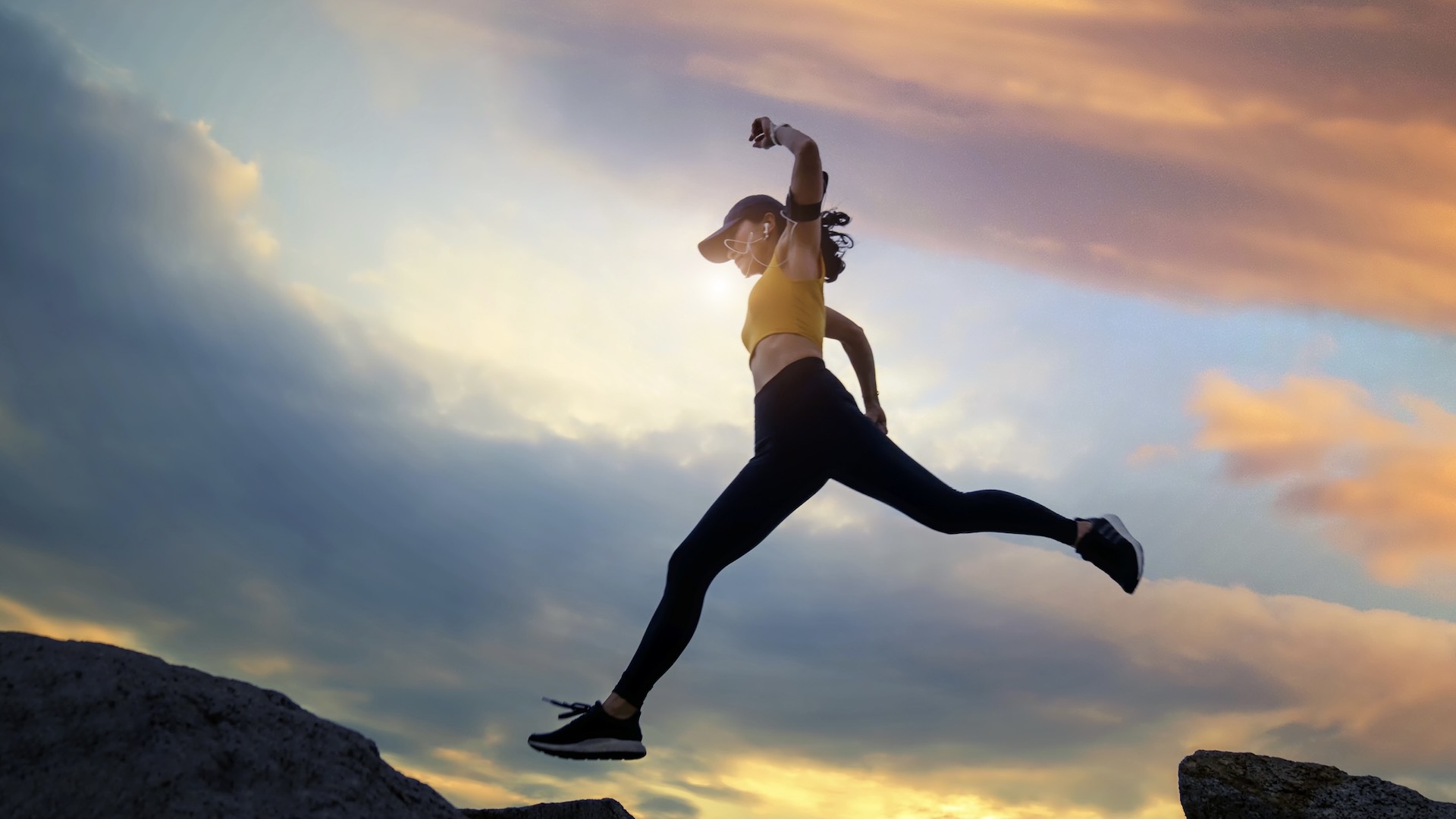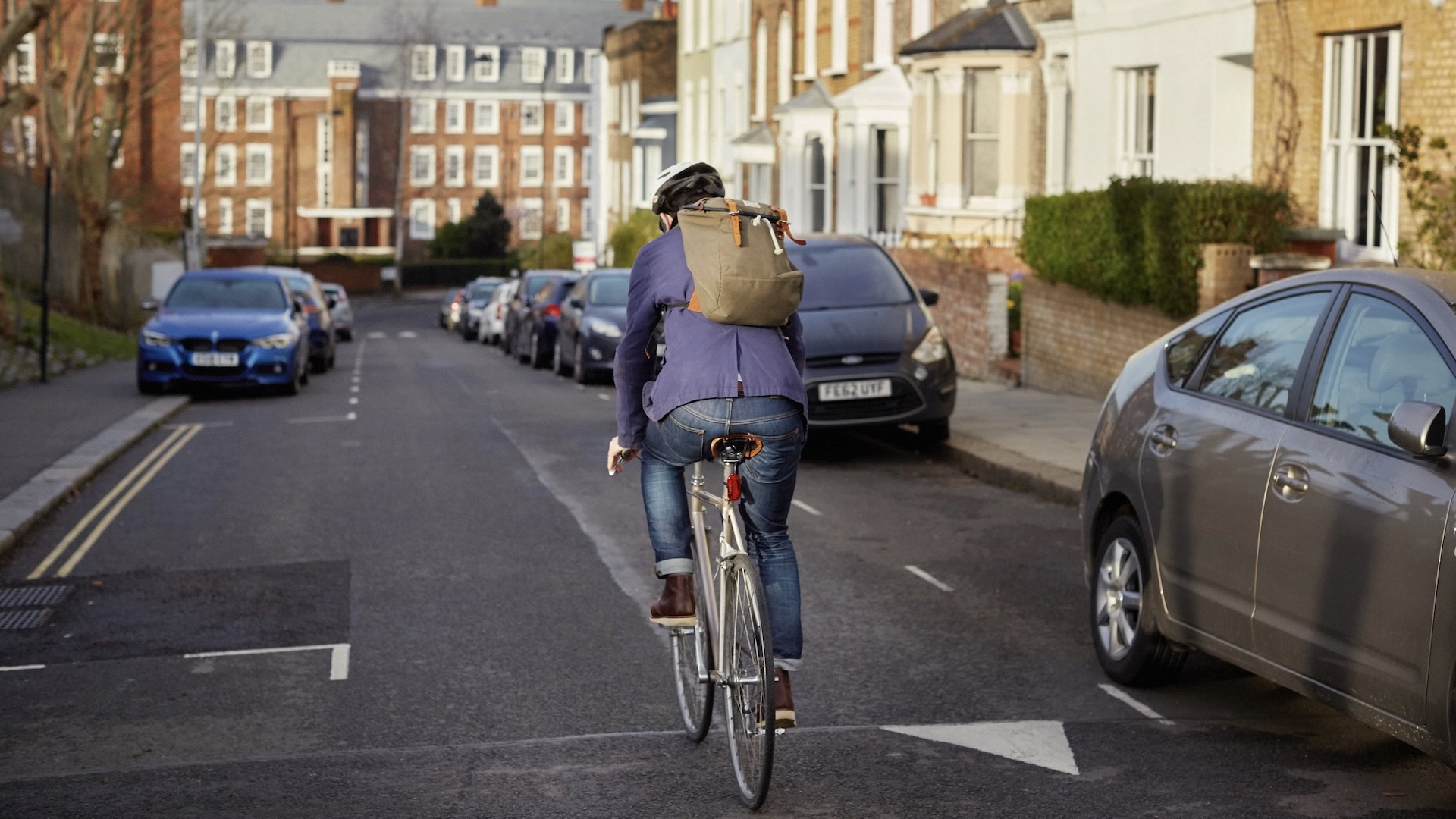Cycling vs running: which is better?
An expert guide to the pros and cons of cycling and running for fitness

Running and cycling are well known as having many benefits for both physical and mental good health. If you add cycling into a running training programme, both sports can work to complement each other.
We asked a range of sports specialists, including James Bickerstaff, a personal trainer at OriGym Centre of Excellence; Ruth Stone, a PT and fitness consultant for Sweatband; and professional triathlete for INCUS Performance Kimberley Morrison, to give us a guide to the pros and cons for both running and cycling.

The pros of running
Easy to do
Stone says: “You can run almost anywhere, at almost any time, whether it is on pavements, fields, trails or at the gym."
Running also requires only a basic set of kit to get started – and then you’re off out the door.
This means that running can be easier to do than cycling because cycling requires more equipment and usually more planning.
All weathers
All the latest inspiration, tips and guides to help you plan your next Advnture!
Running is enjoyable when it’s cool and dry but it’s still a form of exercise that is possible to do in all kinds of weather. There is less impact of rain and wind when running, compared to cycling.
It’s natural
Stone makes the point that, in evolutionary terms, humans are “inherently able to run”. This means that running comes naturally to most people once they learn to walk.
Cardio booster
Running is good for cardiovascular fitness. Running is a form of heart-pumping aerobic exercise and it’s exactly the sort of exercise that health experts recommend for maintaining a healthy body. Research shows that improving your cardio system helps to protect against a range of potential illness, such as stroke, heart attack, some cancers, depression, diabetes, obesity and arthritis.
Calorie burner
A 30-minute run will burn on average 200 to 250 calories. The calorie burn rate depends on weight and how hard you are working, but it is still a good way to drop some pounds if that is your goal.
Bone health
Osteoporosis (brittle bones) can become an issue for many people as they age, and especially women post menopause. There are plenty of reasons why women should run through the menopause and one key factors is that running is a weight bearing exercise.
Bickerstaff says: “Running increases the production of bone-building hormones, which stimulate the production of bone cells. This means bones will be more resilient to fractures and strains.”
Frees the mind
A number of studies have found running is beneficial to mental health. Running often leads to a release of endorphins, which is known as the 'runner’s high'. Bickerstaff says: “It’s these hormones that can help to combat negative emotions and encourage a positive sense of mindfulness.”

The cons of running
Hot and cold
In very sunny weather, running can feel extremely hard and fatiguing. You might want to learn the tips for running in a heatwave. In cold weather, you need to keep on running to prevent yourself feeling too cold. So, it can be tricky to find the right balance of body warmth in different weather conditions.
Those ups – and downs
Running uphills is not easy. Running downhill, particularly if trail running, can be tricky and technical.
High impact
Running is a high-impact for of exercise and each time you take a stride, your body will feel the impact. This can lead to aches, pains and injuries.
Stone says: “Particular areas for concern could be calves, knees, quads and hips.”
Out of balance
Running mainly uses the muscles of the lower body. Bickerstaff says: “This negligence of training can cause bodily imbalances, meaning that you’ll become more susceptible to injuries. Likewise, you will lack upper body strength, which could cause issues with other forms of training.”
Costly
While a simple set of running kit is cheaper than buying al the equipment for cycling, it does depend on how many pairs of road or trail running shoes you decide to buy and what type of kit you purchase. If you get into running, the chance are you’ll want ALL the kit.
The best trail running shoes or road running shoes can be expensive – and then there’s running poles, running hydration pack, waterproof jacket, shorts, tights, baselayers, gloves etc.

The pros of cycling
Speedy miles
At cycling pace, you can see so much more of the country and get to and from places with greater speed than running. Morrison says: “Cycling is great because you can explore lots of your local area with ease.”
Easier ups and downs
With the aid of a bike, pedal power and good gears, cycling uphill is easier on average than running. And it goes without needing to be said that cycling downhill, especially when freewheeling, is a real joy for riders.
Calorie burner
According to Harvard University, biking at a moderate speed of 12 to 13.9 miles per hour will see off almost 300 calories in 30 minutes for a person weighing 155lbs. At a faster rate of 14 to 15.9 miles per hour, a person of the same weight will burn almost 375 calories.
Cafe stops
The increasingly popular trend of cycling between cafes is a great advantage for cyclists. Morrison says: “A big plus of cycling is getting together with other people for a ride and stopping at cafes."

The miles add up
You can easily slot in health-giving miles on your bike by cycling to the office, to the shops or to visit friends. These miles will aid your overall fitness and make the actual cycling training easier.
Low impact
While running and cycling are both excellent for cardiovascular health, cycling allows you to exercise without the impact of pounding the ground with every stride.
Morrison says: “Cycling is great for the cardio system and has long-terms health benefits but without being a high-impact sport.”
Strong legs
Morrison explains that cycling is particular good for improving muscular endurance, “especially in the quads and calves”.

Cons of cycling
The hassle factor
You need to be in the habit of cycling and have all your cycling gear to hand to avoid the faff factor. Otherwise you will spend ages remembering what it is you need to wear and take with you in case of a mechanical issue or puncture.
There is generally more to organise, think about and plan when cycling, compared to running.
Costly
While both running and cycling require expenditure on kit, cyclists require a bike and this is likely to be more costly than any item used for running. Then there's cycling clothing, helmet, shoes, rucksack, puncture repair kit, spares, bike servicing and repairs and more.
Weather dependent
There are many more 'fair weather' cyclists than runners – and it’s easy to understand why. The impact of the wind, rain, snow and cold while pedalling is far greater than when going at running at speed.
Traffic worries
Many people are put off cycling on the roads due to issues of traffic dangers. Choosing quiet cycling routes and wearing hi-viz clothing can help to avert some of these issues. Another option is to stick to off-road and gravel cycling routes. A study also found that on balance the benefits of cycling outweigh the potential risks.
Running vs cycling
Whether you choose to run, or cycle, for do a mix of both forms of cardio exercise, you’ll discover the pros generally outweigh the cons for both sports.
- Best trail running shoes: for tackling the toughest terrain

Fiona Russell is a widely published adventure journalist and blogger, better known as Fiona Outdoors. She is based in Scotland and is an all-round outdoors enthusiast with favorite activities including trail running, mountain walking, mountain biking, road cycling, triathlon and skiing (both downhill and backcountry). Aside from her own adventures, Fiona's biggest aim is to inspire others to enjoy getting outside and exploring, especially through her writing. She is also rarely seen without a running skort! Find out more at Fiona Outdoors.
